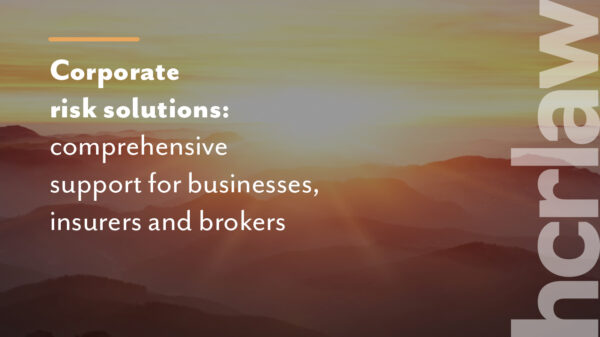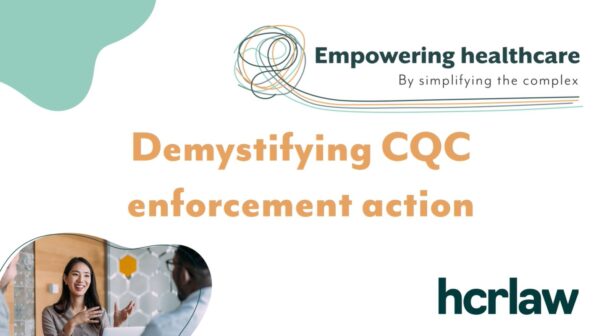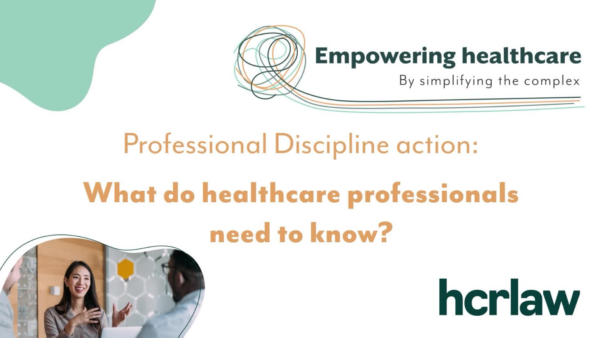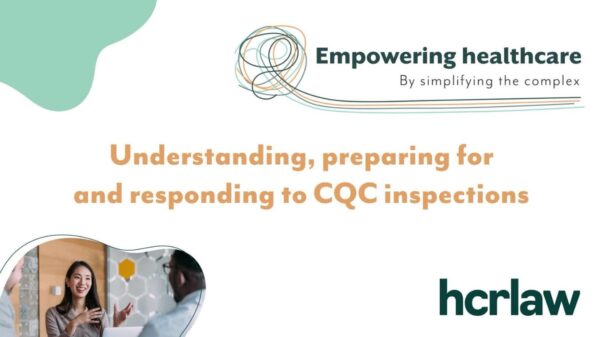

I first came across the concept of Suspension of Ratings (not suspension of registration, which is the concept most will be familiar with) in 2019. A power that allows the CQC to suspend your rating when it has belief that that rating no longer accurately reflects the service that you are providing. I wrote about this little-known power in November 2019, and followed this up in 2020 after I requested, and received, CQC’s internal guidance on this power (“Guidance”). You can read my two earlier articles It isn’t something that I’ve seen being used in practice, so it’s of no surprise that my ears pricked up when I heard “Suspension of Ratings” being mentioned in the CQC March 2023 Board Meeting.
Mark Chambers, the chair of the CQC’s Regulatory Governance Committee, noted that the Committee had undertaken a deep-dive of the CQC’s ratings and inspections process. He noted that the deep-dive highlighted CQC’s ability to suspend providers’ ratings and, whilst it is something that is used rarely, there was an opportunity for the CQC to use that tool more frequently.
Under the CQC’s new Strategy the CQC wants to produce more contemporaneous ratings. It says “Our ratings will be more dynamic – we’ll update them when there is evidence that shows a change in quality. We won’t always need to carry out an inspection to do this.”
We are still waiting to see how this is going to work in practice but given Mr Chambers comments I wonder if suspension of ratings will be a tool that is used more frequently – not to enable the ratings to be more dynamic, but enable the CQC to publicly state that the current rating may not be accurate. This simply allows the CQC to say ‘Hey, we flagged there might be a concern’ (and potentially cause all sorts of reputational and commercial issues) but this doesn’t mean the rating change will be dynamic.
The CQC says that the suspension, “in and of itself, is not intended as a judgement of a service” but we know that judgements will be made: by the public, by commissioners, by safeguarding, by a lender, by insurers. In addition, the new Guidance states that the CQC would not “normally suspend a rating where the existing rating is Requires Improvement or Inadequate”. If this is the case, then the CQC is certainly making a judgement about the rating. It is saying that it has reason to believe that the rating has fallen from Good or Outstanding to Requires Improvement or Inadequate. If the CQC were not making a judgement, then it would suspend ratings for all, regardless of the existing rating.
We know the CQC is carrying out inspections based on perceived risk. In Quarter 3 of 2022/2023, 83% of inspections were due to risk which consisted of new and emerging risk including whistleblowing, safeguarding concerns and inherent risk such as previous enforcement. As most inspections are carried out because there is an indication that the risk, and most likely, the rating has changed (for the worse) will we see suspension of ratings being used on any occasion that a concern is flagged with them? It immediately flags to the world that there is a potential problem.
The CQC says that the purpose of suspending a rating is “in case of urgency, to immediately minimise potential harm to current or prospective users of the service”. Whilst it is highly questionable how the suspension of a rating minimises potential harm to a current service user, the CQC is likely to argue that suspending a rating, at least partially discharges the CQC’s main statutory objective in performing its functions, “to protect and promote the health, safety and welfare of people who use health and social care services”. That is, until it can determine whether the risk is present.
In the latest version of the Guidance the CQC states that suspending the rating ensures that “the public and people who use services have the most accurate and up to date information possible” [my emphasis]. I fail to see how this provides accurate information. What is provides is uncertainty and speculation.
In my 2019 article I questioned whether the CQC was going to use this tool as a way to circumvent the legislation that prohibits it from publishing information about certain enforcement action until that action is completed, and only if the provider makes an unsuccessful challenge to the action. Take, for example, action by the CQC to cancel a provider’s registration. The provider has certain rights of challenge and if they choose to appeal the decision, and are either successful at the representation stage or all tribunal stage there can be no publication of the action being taken. Now, the CQC could suspend the rating (a non-statutory action) to “warn” the public whilst it takes legislative steps against the provider.
After I heard mention of this power again, I requested an up to date version of the previous Guidance. The basics remain the same, but there are some fundamental differences to note
Guidance Version 1 | Guidance Version 4 |
Suspending a rating should be done “In consultation with Legal Services” and legal should always attend a management review meeting where suspension of ratings is under discussion. | Legal Services are listed as somebody that “could” be involved with the decision. It is no longer mandatory. |
Changing ratings requires an inspection to be completed. | They new guidance does not require an inspection to take place but applying new ratings, lifting the suspension or reinstating the public statement should only be done when the CQC is “confident the published ratings are an accurate reflection of the quality of care delivered by the provider.” This is in line with the CQC’s move away from inspections and using intelligence to change ratings. |
The inspection that is required before a rating can be changed should be completed within a month of suspending the rating. | Now the CQC “should aim to suspend ratings for the shortest time possible”. This does not mean that the period of time the rating is suspended for is short. |
There is a section entitled “Challenges” which says “Contact the appropriate legal team if the provider contact you with regards to having their rating reinstated or challenged the decision to suspend the rating”. | The new guidance makes no such reference. As this power is non-statutory how is a provider supposed to question or challenge the information the CQC relies upon to suspend a rating, especially if it is done without provider involvement? |
Ratings would only be suspended where concerns suggest that “the quality of the service could be significantly lower than suggested by existing ratings”. | The new Guidance makes no such reference. |
I searched the CQC website for “suspended the ratings” in line with the banner wording that will be placed on a location page in the event of a suspension of rating. Three results came up via the press releases. I read the press releases but didn’t understand the purpose of the suspension because initiating it did not remedy any of the alleged failings and in two of those cases, warning notices had also been issued. It did not appear that urgent enforcement action had been taken alongside the suspension. Indeed, if action is urgently required, then the CQC has enough weapons in its arsenal to force improvement or restrict a provider from carrying on. These are powers under legislation but to use them successfully the CQC has to be able to prove, with reference to evidence, that the action is required.
It appears to me that Suspension of Ratings relies less on evidence, and more on the court of public opinion.










